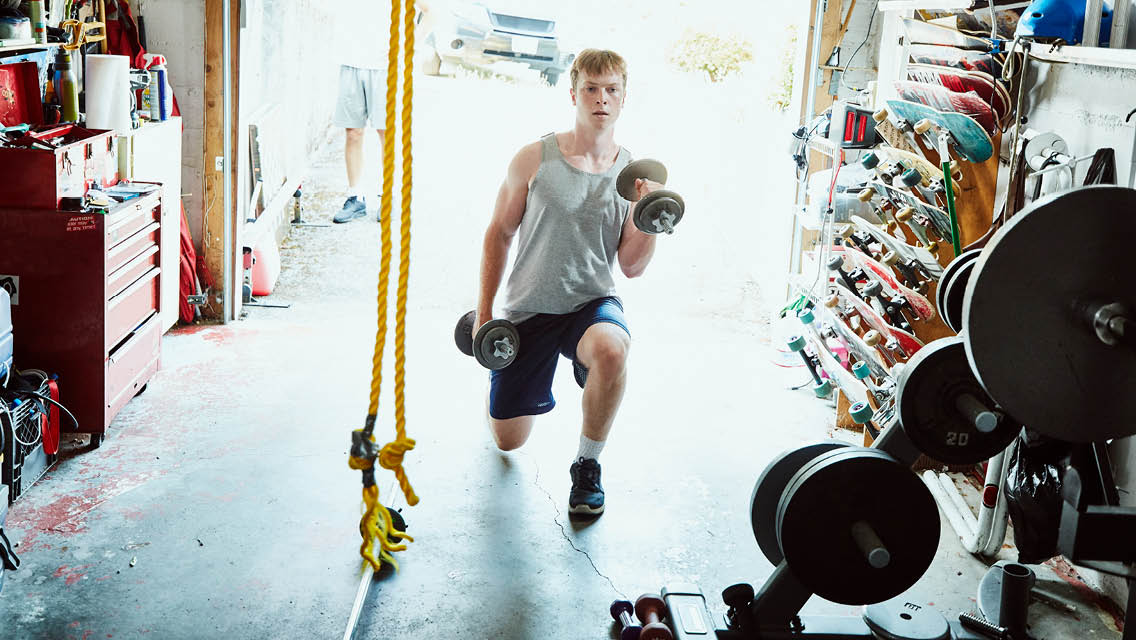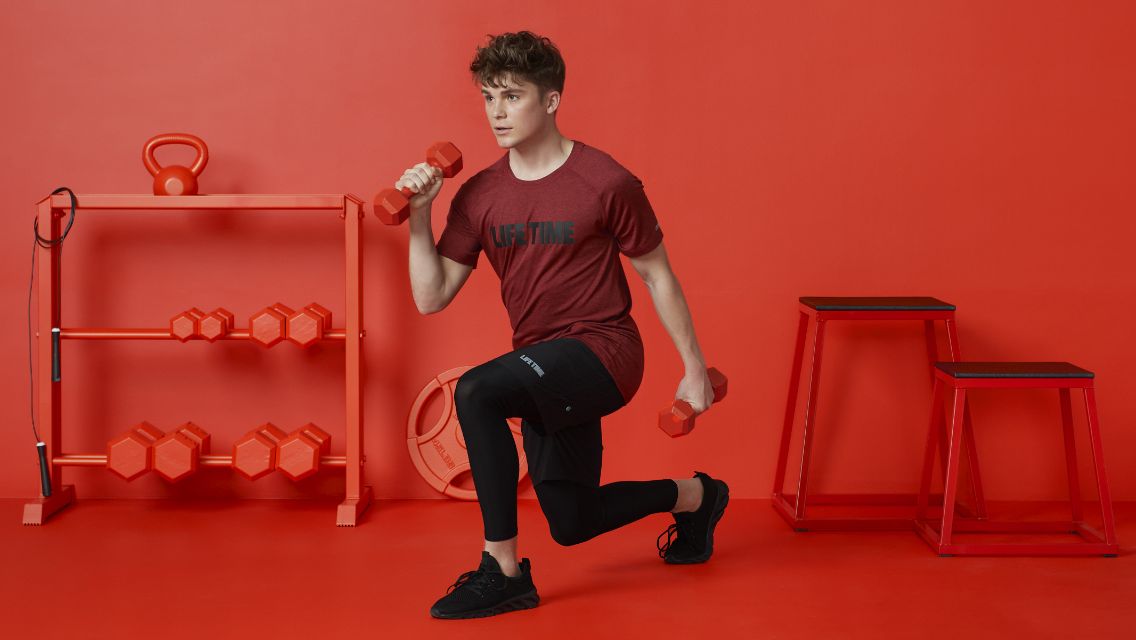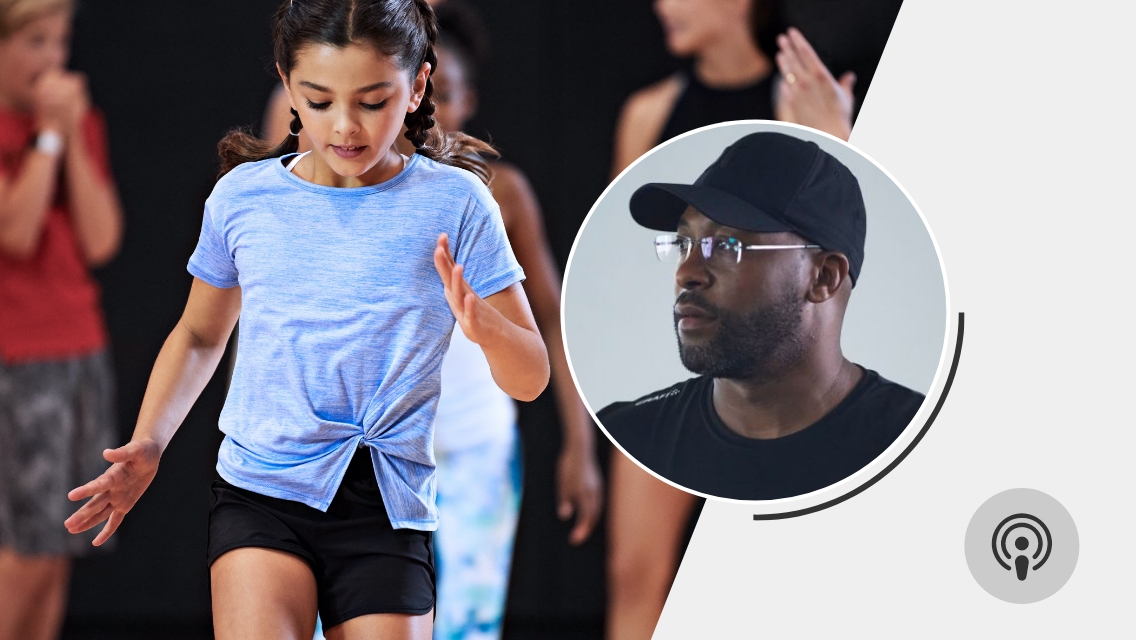Strength Training ⋅ Cardio ⋅ Mobility
A balanced fitness routine, whether it’s a standalone program or designed to supplement other training, ideally includes three broad areas of movement: strength training, cardio, and mobility. Here’s what you need to know about each of them.
1) Strength Training
In the 1970s and ’80s, it was widely believed that the risk of injury made strength training unsafe for kids and adolescents. But more recent studies have found that it’s truly safe — as long as young people follow age-appropriate training guidelines.
“Really young children, as early as 7 or 8 years old, are often perfectly capable of being involved in strength training,” says Suanne Kowal-Connelly, MD, a New York–based pediatrician, youth coach, and author of Parenting Through Puberty. “What is necessary for success is a young child having a desire to do it, being able to listen to directions, and being willing to commit to working out regularly. Then they can safely start a strength-training program along with the guidance of an adult.”
In fact, the National Strength and Conditioning Association states that a strength-training program can offer all sorts of benefits: It can enhance your muscular strength and power; improve your heart health; boost motor-skill performance and contribute to enhanced sports performance; increase your resistance to sports-related injuries; and help improve psychosocial well-being.
To make the most of your strength-training routine, heed the following tips.
• Focus on multijoint primal movement patterns, such as squatting, hinging, pushing, pulling, and lunging, says McDowell.
• Start with your own body weight or light resistance. Jordan uses a combination of body-weight exercises, plyometrics, and resistance bands when training younger athletes. He introduces light dumbbells to high schoolers.
• Stay in a moderate rep range. “The most important consideration is impeccable form. Heavy loads tend to get sloppy and put a strain on your central nervous system. You are still growing and should not be maxing out,” says Life Time personal trainer and strength coach Becca Rigg, NASM-CPT. She recommends choosing a weight that you can handle for either six to eight reps or eight to 10 reps.
If you’re looking to maximize strength, McDowell recommends doing three sets of five twice a week for most exercises. Gradually add weight each week, as long as you’ve been able to complete your sets.
• Emphasize recovery. Aim for at least two and no more than three days a week of strength training, says Rigg. Your rest days should still include movement for active recovery.
Adequate sleep — at least eight to 10 hours a night — and nutrition are also key. “It’s important that you’re getting enough calories, since your body already has a high caloric demand because of growth,” says Rigg. (Learn more about active recovery at “Why Workout Recovery Days Are Essential for Optimal Fitness.”)
2) Cardio
We often think of people running or getting on a machine such as a treadmill or elliptical trainer as cardio exercise. But it also includes activities such as dancing, playing soccer, and riding a bike.
“Cardio is about training your engine,” says Rigg. “You want to be able to bound up the stairs without being out of breath. You want to run the mile in PE class without it being so horrible. You want a long, healthy life, and cardio is a nonnegotiable part of that.”
Incorporate some cardio into your life with these tips.
• Do something you enjoy. If you love to run, that’s great — running is one of the most efficient cardiovascular activities. But if the thought of putting in road miles or getting on a treadmill makes you cringe, explore other forms of cardio until you find something that you enjoy and can look forward to doing.
“The key to success is to pick something you like. Make it fun,” says Kowal-Connelly. Go for a walk with a friend. Have a dance party or learn a TikTok dance. Go bicycling or take a cycling class. Get a group together for a basketball scrimmage. (See “Find Your Fitness Passion” for ideas on how to start falling in love with physical activity.)
• Make consistency your goal. Whether you want to improve your health or become better in your sport, you have to be consistent. To start, you might try to do 20 minutes of cardio twice a week, says Rigg. Once you’ve developed a habit of consistency, you can start to set performance goals.
• Avoid doing too much too fast. One of the biggest pitfalls that new exercisers encounter is feeling pressure to go all-out — only to burn out or get hurt. Training is not an area in which 100 percent effort or pushing to failure regularly is rewarded.
Listen to your body and follow the 10 percent rule when you’re ready to progress: For instance, if you’re a runner, add up your total mileage over the week and aim to increase your weekly mileage by no more than 10 percent.
3) Mobility
Mobility describes the ability to move through a full range of motion with control — a combination of flexibility and stability. To better understand what mobility means, try this:
- Stand, raise one knee in front of you as high as you can, and take note of how high it goes. That’s your active range of motion.
- Then lower your knee and repeat — this time, hugging your knee close to your chest with your arms. You probably got your knee a bit higher — that’s your passive range of motion.
If the difference is large — that is, your joints can achieve ranges of motion that your muscles on their own can’t control — the chances of injury when you fall, jump, or lift a heavy weight increase. Targeted mobility training can help close the gap, helping you maximize performance and avoid injury, says DeVentri Jordan, founder and national director of Life Time’s GameFace training program for youth athletes.
A trainer can help you assess your mobility needs based on your unique body and goals. You can also add some targeted mobility work into your training in the following ways.
- Do dynamic stretches to start your workouts; think large, controlled, repetitive movements that warm you up and prep your body to move. Jumping jacks, walking lunges, and wrist and ankle circles are just a few examples. (For an effective routine, visit “The Perfect Warm-Up.”)
- Incorporate mobility into your training. Complement your workouts with targeted mobility moves, such as segmented cat–cow and articulated shoulder rolls. (Find these moves and more at “Is Stretching Good for You?“)
- Save static stretching for your cool-down or outside of your workout (unless a coach or trainer has instructed otherwise). These classic stretches include pulling your arm across your body to stretch your triceps and lateral deltoid and grabbing your foot behind your body to stretch your quad. Make sure to hold them for one minute or longer to get the full benefits. (For the perfect stretching routine, visit “4 Cool-Down Exercises.”)
This was excerpted from “A Teen Fitness Guide” which was published in Experience Life.





This Post Has 0 Comments